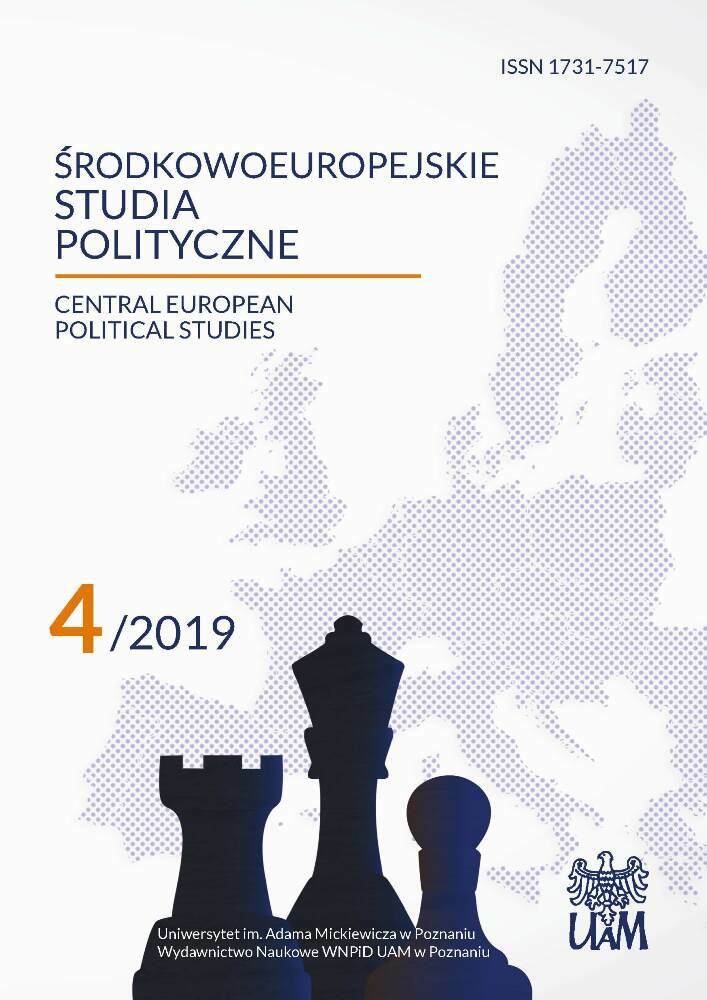Abstrakt
Trwający konflikt rosyjsko-ukraiński dostarcza wielu przykładów wykorzystywania mediów, także tych technologicznie nowych, do prowadzenia walki informacyjnej. Artykuł koncentruje się na problemie znaczenia mediów cyfrowych w warunkach wojny na wschodzie Ukrainy oraz w okresie protestów społeczno-politycznych z przełomu 2013/2014 roku, które poprzedziły konflikt zbrojny. W artykule dokonano analizy sposobów instrumentalnego wykorzystywania mediów cyfrowych przez Rosję jako podmiot dominujący w prowadzeniu agresywnej walki informacyjnej przeciwko Ukrainie oraz działań obywatelskich po stronie ukraińskiej, których celem było przeciwdziałanie rosyjskiej propagandzie. Wskazano, że w czasach mediatyzacji wojny, poszczególne podmioty aktywnie korzystają zarówno z tradycyjnych mediów, które są obecne w przestrzeni cyfrowej, jak i z mediów społecznościowych. Ponadto, w pracy dokonano usystematyzowania aparatury pojęciowej związanej z dyskutowaną problematyką. Artykuł oparty jest o analizę studiów przypadku (przede wszystkim działalności rosyjskiej telewizji RT i ukraińskiej, społecznej inicjatywy StopFake), analizę treści, analizę i krytykę piśmiennictwa oraz badanie opracowań źródłowych. Praca uzupełnia aktualną debatę na temat konfliktu zbrojnego pomiędzy Ukrainą i Rosją poprzez zwrócenie uwagi na rolę mediów cyfrowych w kontekście walki informacyjnej oraz ukazanie, że media cyfrowe, szczególnie media społecznościowe, mogą stanowić platformę działania nie tylko dla aktorów państwowych, lecz również obywateli.
Finansowanie
Praca ta była wspierana przez Narodowe Centrum Nauki (NCN) w ramach projektu badawczego „Rola polskich organizacji pozarządowych we wspieraniu rozwoju mediów na Ukrainie”, Narodowe Centrum Nauki (NCN), Program PRELUDIUM, nr. UMO-2017/25 / N / HS5 / 01404.
Bibliografia
Bastos M. T., Mercea D., Charpentier A. (2015), Tents, tweets, and events: The interplay between ongoing protests and social media, “Journal of Communication”, vol. 65, no. 2.
Batorowska H., Klepka R., Wasiuta O. (2019), Media jako instrument wpływu informacyjnego i manipulacji społeczeństwem, Kraków.
Chadwick A. (2013), The Hybrid Media System: Politics and Power, Oxford.
Darczewska J. (2014), The Anatomy of Russian Information Warfare. The Crimean Operation. A Case Study, Warsaw.
Death Toll Up To 13,000 In Ukraine Conflict, Says UN Rights Office, https://www.rferl.org/a/death-toll-up-to-13-000-in-ukraine-conflict-says-unrights-office/29791647.html, 20.10.2019.
De Franco C. (2012), Media Power and the Transformation of War, New York.
English-language news source Ukraine Today shuts down (UPDATED), https://www.kyivpost.com/ukraine-politics/english-language-news-source-ukraine-today-shuts.html, 30.09.2019.
“EU vs Disinfo”, https://euvsdisinfo.eu/about/, 28.09.2019.
Facebook users in Ukraine, https://napoleoncat.com/stats/facebook-users-in-ukraine/2019/04, 30.09.2019.
Flikke G. (2015), A timeline for the Conflict and war in Ukraine, “Security Policy Library”, no. 4.
Gilboa E., Jumbert M. G., Miklian J., Robinson P. (2016), Moving media and conflict studies beyond the CNN effect, “Review of International Studies”, vol. 42, no. 4.
Grabowski T. (2016), Metody walki informacyjnej na przykładzie konfliktu rosyjsko- -ukraińskiego (2014–2016), “Horyzonty Polityki”, vol. 7, no. 20.
Hoskins A., O’Loughlin B. (2010), War and Media: The Emergence of Diffused War, Cambridge.
Inside Putin’s Campaign Of Social Media Trolling And Faked Ukrainian Crimes, https://www.forbes.com/sites/paulroderickgregory/2014/05/11/inside-putins-campaign-of-social-media-trolling-and-faked-ukrainian-crimes/#2f9512e67140, 22.10.2019.
Jowett S. G., O’Donnell V. (2012), Propaganda & Persuasion, Thousand Oaks.
Kaplan A. M., Haenlein M. (2010), Users of the world, unite! The challenges and opportunities of social media, “Business Horizons”, vol. 53, no. 1.
Krzysztofek K. (2006), Status mediów cyfrowych: stare i nowe paradygmaty, “Global Media Journal-Polish Edition”, no. 1.
Lakomy M. (2015), Przebieg i uwarunkowania konfliktu na wschodzie Ukrainy, in: Implikacje konfliktu ukraińskiego dla bezpieczeństwa Polski. Aspekty polityczne, wojskowe, gospodarcze i społeczne, ed. M. Stolarczyk, M. Lakomy, K. Czornik, Poznań.
Liedel K., Piasecka P., Aleksandrowicz T. R. (2012), Analiza informacji. Teoria i praktyka, Warsaw.
Lister M., Dovey J., Giddins S., Grant I., Kelly K. (2009), New media: a critical introduction, Abingdon.
Media Landscapes: Russia, https://medialandscapes.org/country/russia/media/television, 30.09.2019.
Media Ownership Monitor Ukraine: Television, https://ukraine.mom-rsf.org/en/media/tv/, 30.09.2019.
NATO Strategic Communications Centre of Excellence (2016a), Framing of the Ukraine–Russia conflict in online and social media, Riga.
NATO Strategic Communications Centre of Excellence, Internet Trolling as a hybrid warfare tool: the case of Latvia, b.m.w, b.r., pp. 97–106.
NATO Strategic Communications Centre of Excellence (2016b), Social Media as a Tool of Hybrid Warfare, Riga.
Nelson E., Orttung R., Livshen A. (2015), Measuring RT’s Impact on YouTube, “Russian Analytical Digest”, vol. 177, no. 8.
Nowak J. (2011), Aktywność obywateli online Teorie a praktyka, Lublin.
Ochmann P., Wojas J. (2016), Zagadnienia prawne rosyjskiej interwencji zbrojnej na Krymie w 2014 r., “Sprawy Międzynarodowe”, no. 1.
Onuch O. (2015), “Facebook Helped Me Do It”: Understanding the EuroMaidan Protester “Tool-Kit”, “Studies in Ethnicity and Nationalism”, vol. 15, no. 1.
Pantti M. (2016), The Ukraine Conflict and the Media. An Introduction, in: Media and the Ukraine Crisis, ed. M. Panttiego, New York.
Patrikarakos D. (2017), War in 140 Characters: How Social Media Is Reshaping Conflict in the Twenty-First Century, New York.
Pospieszna P., Galus A. (2019), “Liberation Technology” or “Net Delusion”? Civic Activists’ Perceptions of Social Media as a Platform for Civic Activism in Belarus and Ukraine, “Europe-Asia Studies”, https://doi.org/10.1080/09668136.2019.1623176.
Robertson A., Chiroiu L., Ceder M. (2019), The protest paradigm and global television news narratives of dissent, in: Screening Protest. Visual Narratives of Dissent Across Time, Space and Genre, New York.
Skoneczny Ł. (2015), Wojna hybrydowa – wyzwanie przyszłości? Wybrane zagadnienia, in: Przegląd Bezpieczeństwa Wewnętrznego – Wydanie specjalne, ed. Agencja Bezpieczeństwa Wewnętrznego, Emów.
Social media marketing in Russia – what’s the difference between Facebook and Vkontakte, https://postfity.com/social-media-in-russia-facebook-vs-vkontak-te/, 20.09.2019.
Uprising in Ukraine: How It All Began, https://www.opensocietyfoundations.org/voices/uprising-ukraine-how-it-all-began.
Widholm A. (2016), Global online news, in: Media and the Ukraine Crisis, ed. M. Pantti, New York.
Yablokov I. (2015), Conspiracy Theories as a Russian Public Diplomacy Tool: The Case of Russia Today (RT), “Politics”, vol. 35, no. 3–4.
тисяч: офіційні дані ООН щодо загиблих у війні на Донбасі, https://www.radiosvoboda.org/a/29792144.html, 22.10.2019.
Мультимедійна платформа іномовлення України, https://mip.gov.ua/files/news/presentation_UT_multimedia.pdf, 22.10.2019.
Пост у Twitter чи Facebook може змінити хід збройного конфлікту – Дейвид Патрикаракос у книжці «Війна у 140 знаках», https://www.radiosvoboda.org/a/patrikarakos-book-war-in-140-characters/30011056.html, 22.10.2019.
Про нас, https://www.ukrinform.ua/info/about_agency.html, 22.10.2019.


